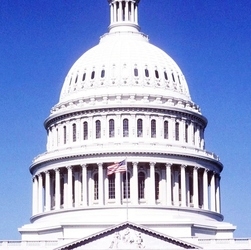 U.S. renewable energy developers will need to find new sources of funding after incentives backed by federal stimulus programs wind down, according to a report from the Reznick Group.
U.S. renewable energy developers will need to find new sources of funding after incentives backed by federal stimulus programs wind down, according to a report from the Reznick Group.
Tax credits are likely to again become the most important subsidies supporting renewable project development in the U.S., given the expiration of the Treasury's 1603 cash-grant program at the end of the month.
According to the report, the total need for tax equity financing next year could be more than $7 billion – an investment gap in the $3.6B range.
‘Nearly all of those stimulus funds have now been deployed,’ says Tim Kemper, renewable energy practice leader at Reznick Group. ‘Unless the private sector steps in with substantial new investment, project development will slow.’
The report says that the investment tax credit (ITC) is an important incentive that can provide critical optionality in light of near- and medium-term market trends.
However, Kemper says the ITC has been underutilized, as wind project developers are more comfortable with using the production tax credit (PTC).
Typically, a larger share of tax equity comes from a PTC investor even though it is more costly, allowing developers to deploy less overall capital. But the price is reduced cashflow that can be leveraged with project-level debt at cheaper yields. Both the ITC and PTC are set to expire at the end of 2012.
According to the report, the choice of ITC or PTC comes down to the three "P's: performance, perspective and priorities. ‘Very high performing projects tend to favor the PTC,’ Kemper explains.
The perspective – tax equity investor vs. developer – also governs the decision. For example, investors almost always prefer the ITC on an internal rate of return basis; and the PTC on a net present value (NPV) basis. For developers, however, the choice depends on the structure and the project quality.
For both investors and developers, priorities – whether NPV matters more or less than IRR, or whether other strategic considerations matter more than these financial measures – may drive the choice.
The report also calls for new investors, creative use of unique tax-based financing structures and alternative sources of tax equity in the next 18 months.
‘Financing for the U.S. renewable sector will look quite different in 2012, compared to the past three years, once the cash grant is gone, but different does not mean dead,’ Kemper says.
The report also suggests that expiration of the cash grant should not be expected to result in collapse of the U.S. renewable sector. What's more, he explains, the tax equity market can be expected to pick up some of the slack.
Tax equity is undoubtedly more complex than a cash-based incentive, admits Kemper. Nevertheless, tax equity economics can deliver meaningful returns to developers and investors, and there remains political support for this policy of tax incentive.
However, despite its complexity, the system works. Annual U.S. wind installations grew by more than 300% year-over-year the last two times that the tax equity incentive mechanism was extended by Congress, and developers and investors have both realized attractive returns in the past for projects funded partially through tax equity (provided the projects' capital costs and power purchase agreement terms were reasonable).
However, significant uncertainty will remain until Congress reaches a decision about extending renewable energy incentives, such as the PTC.



